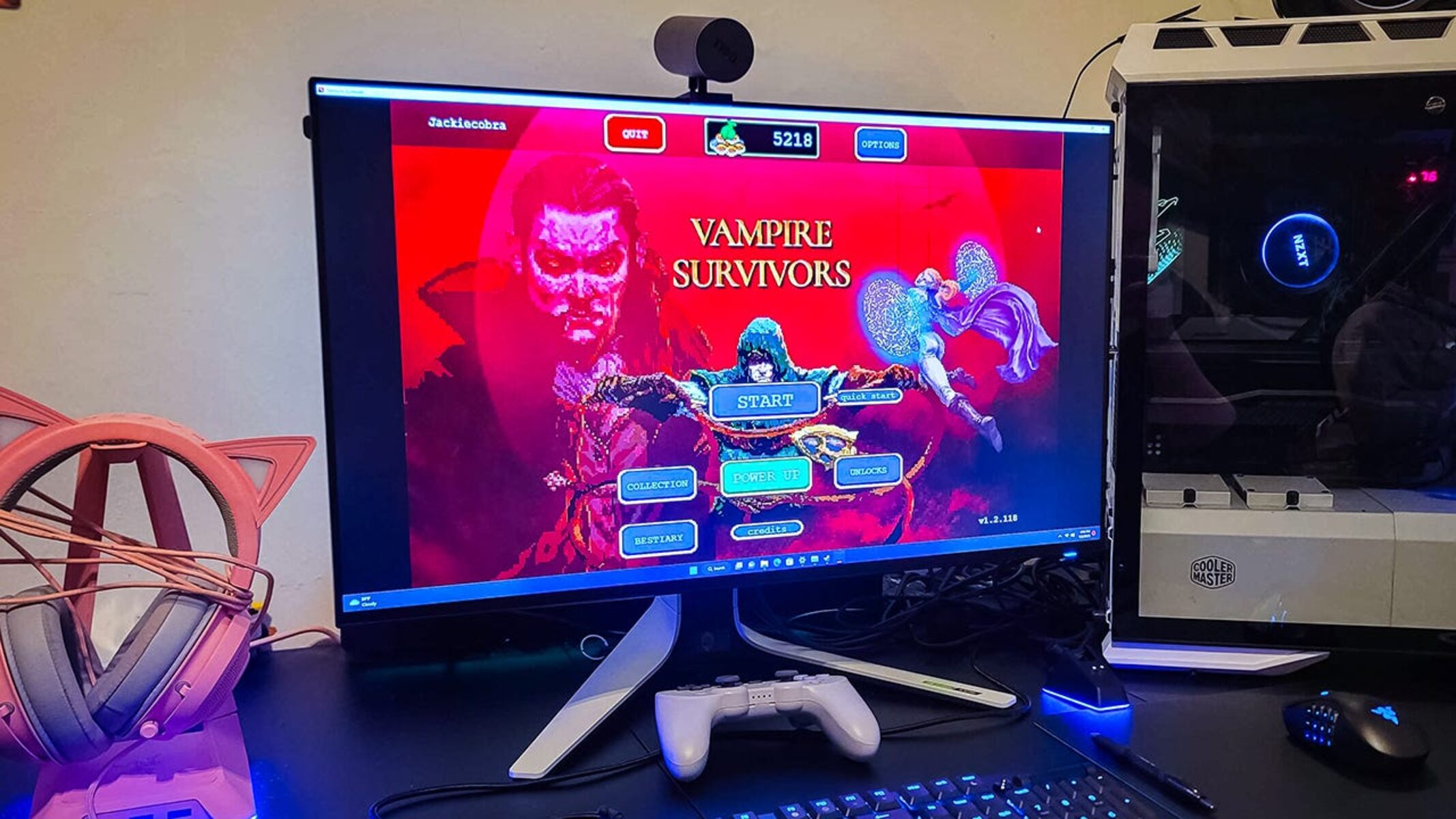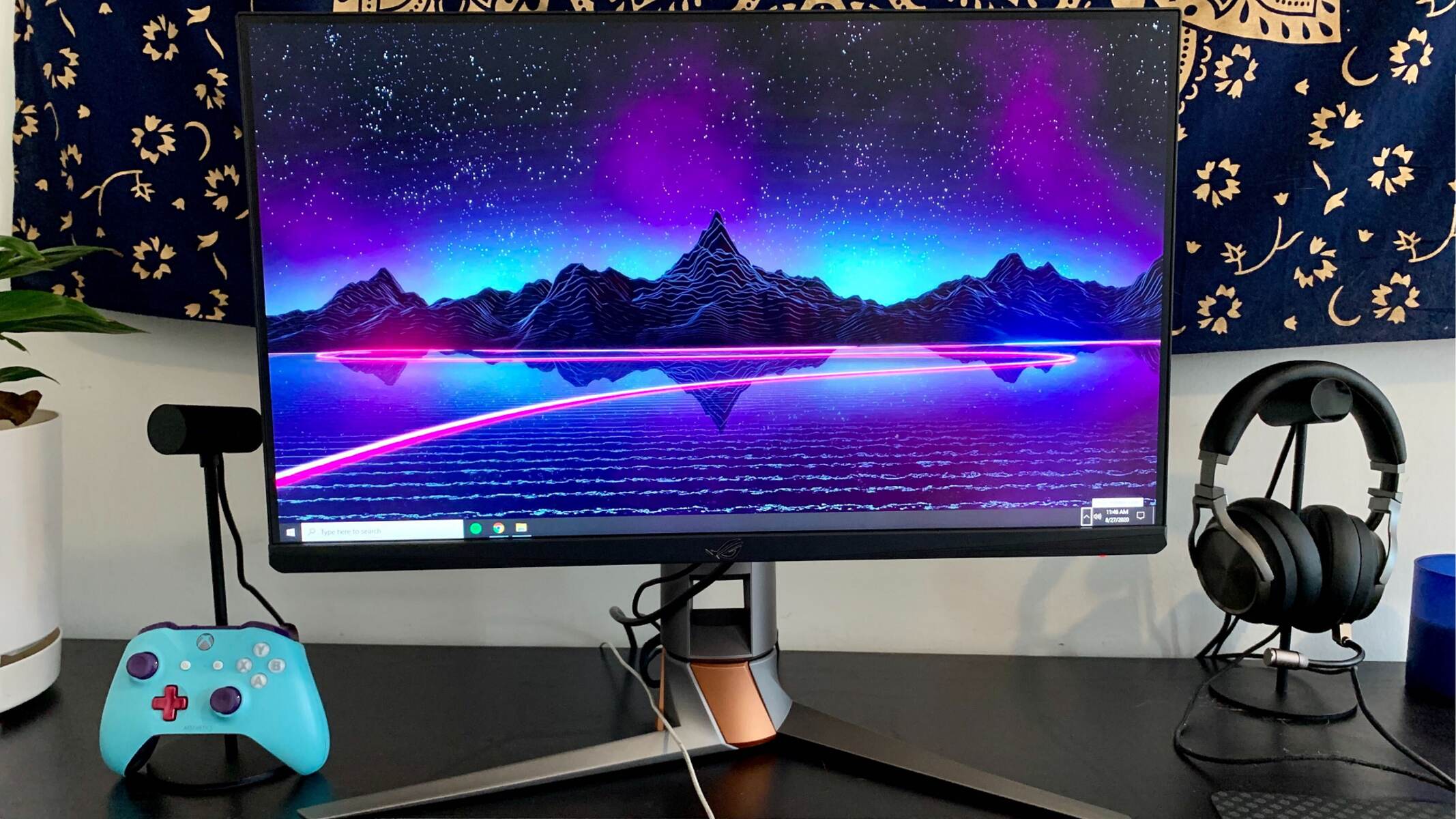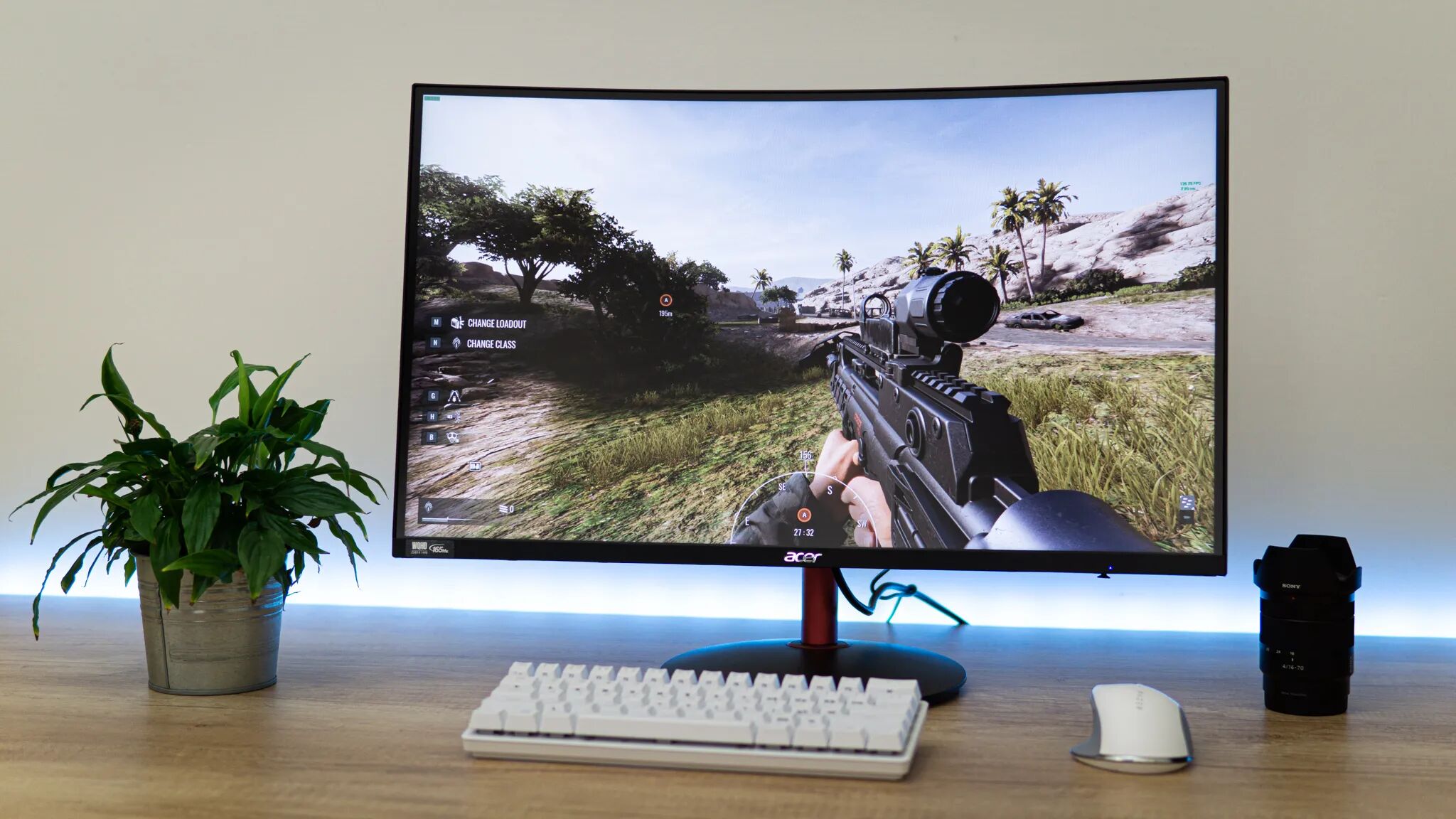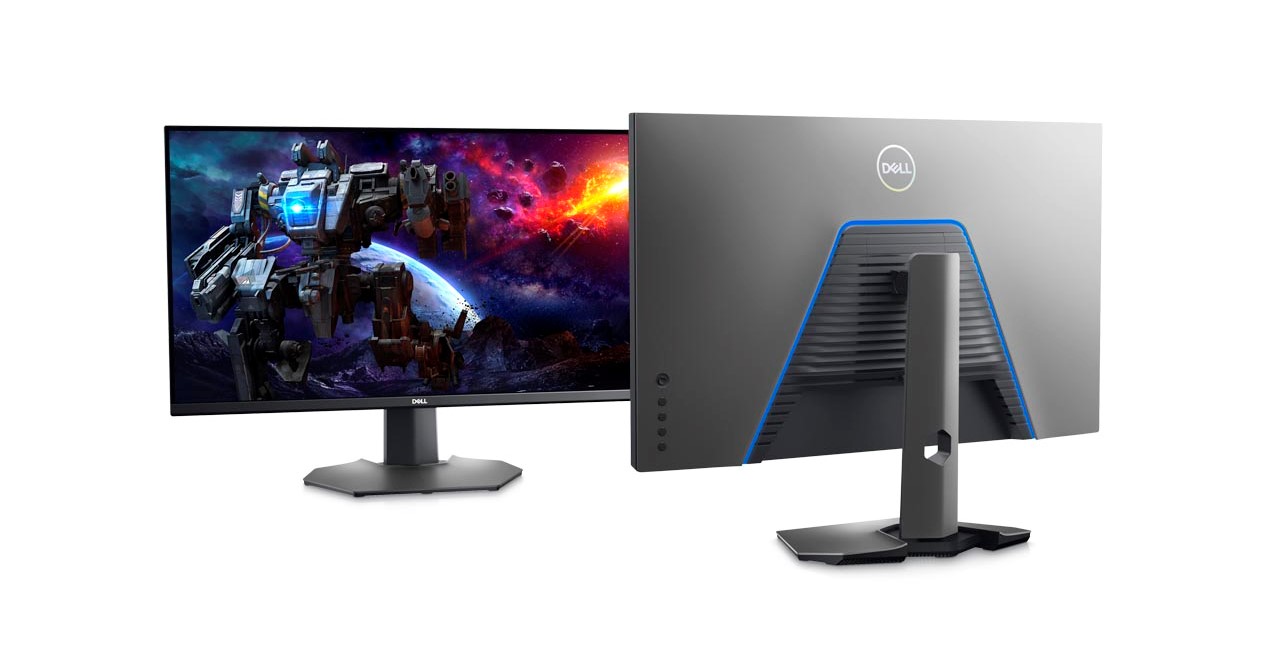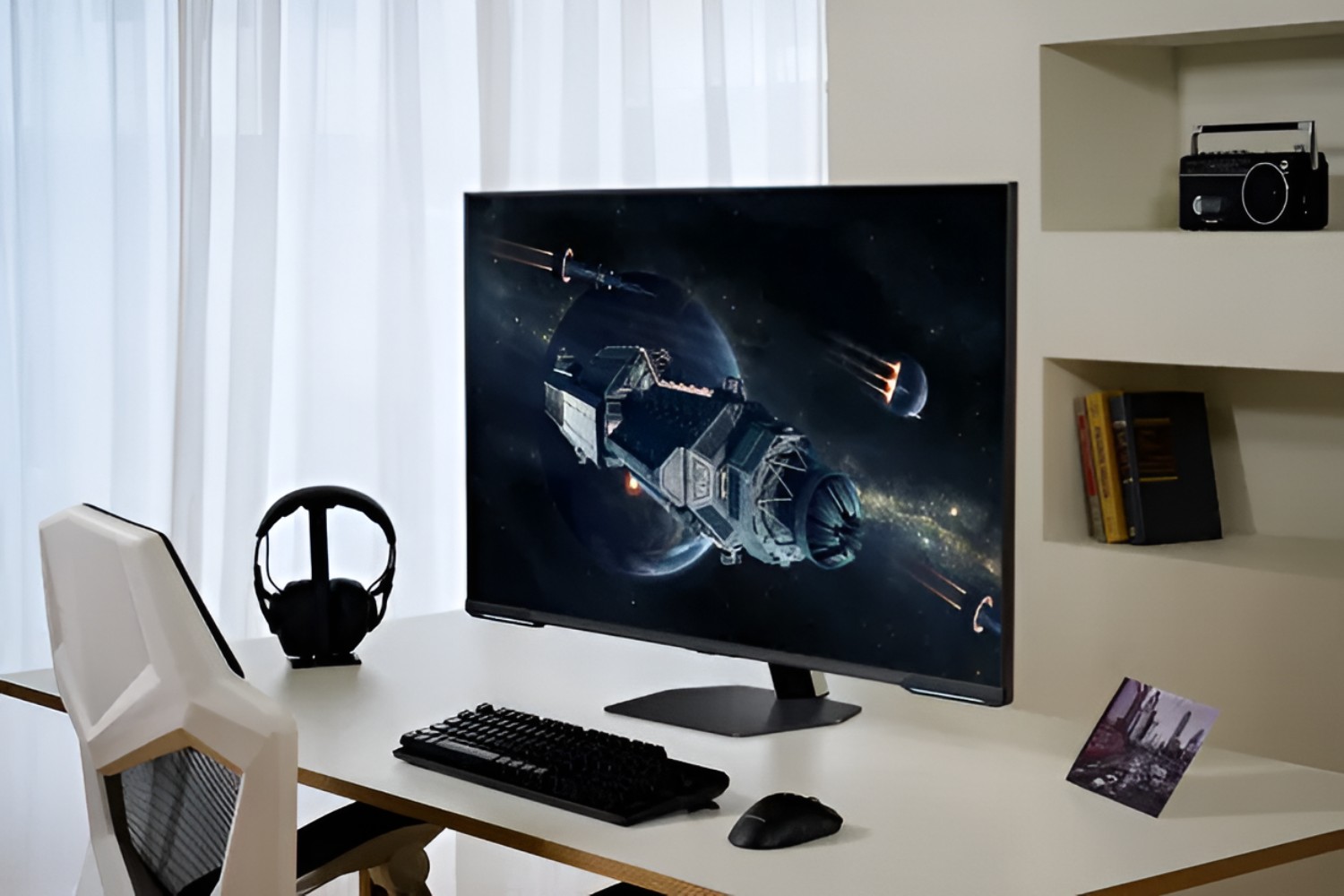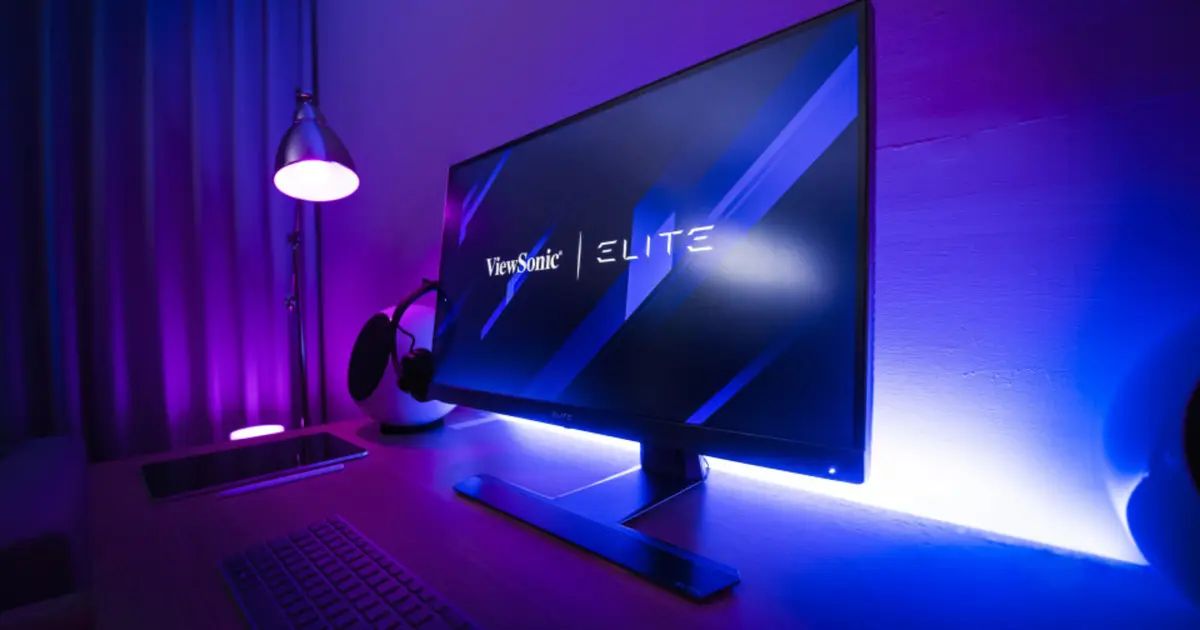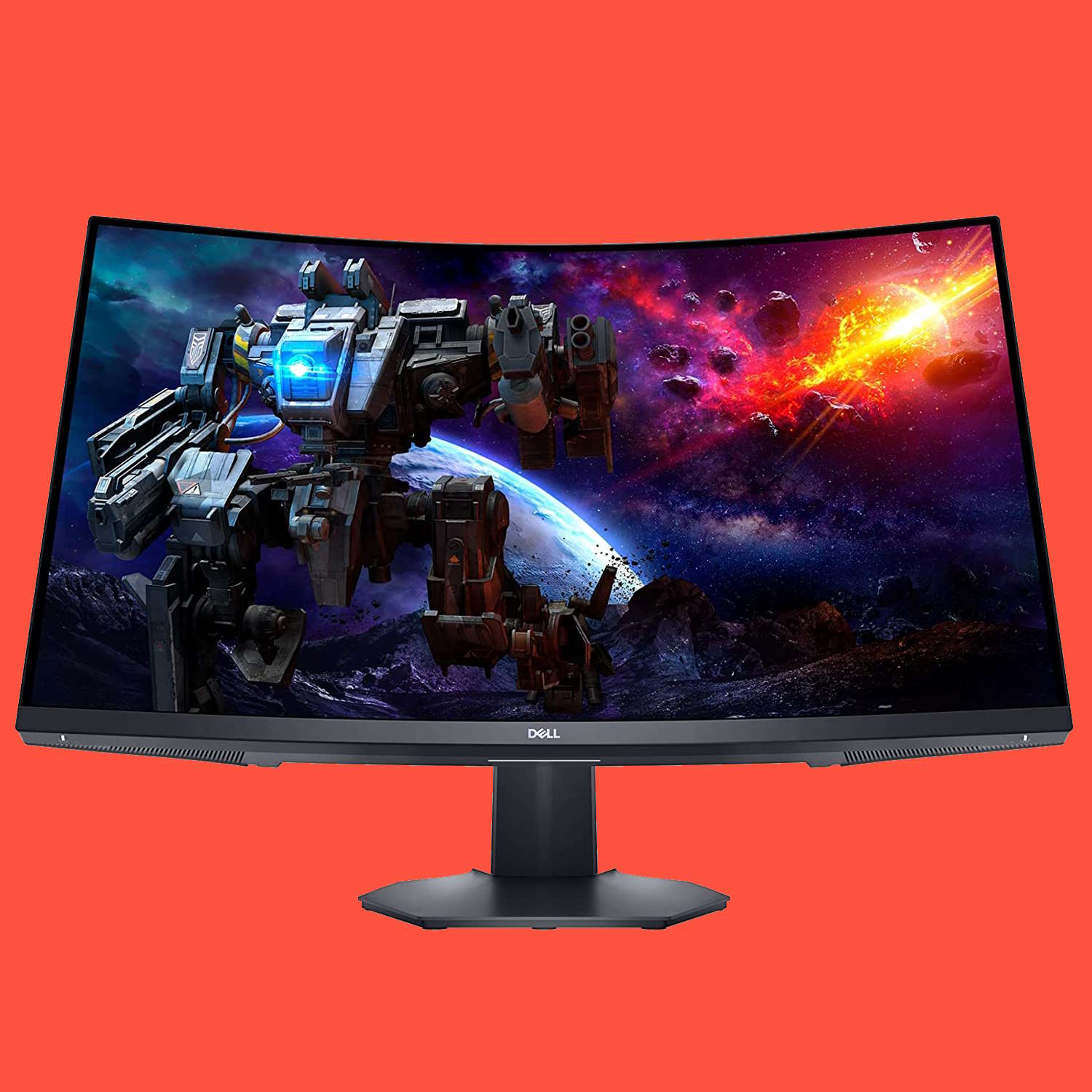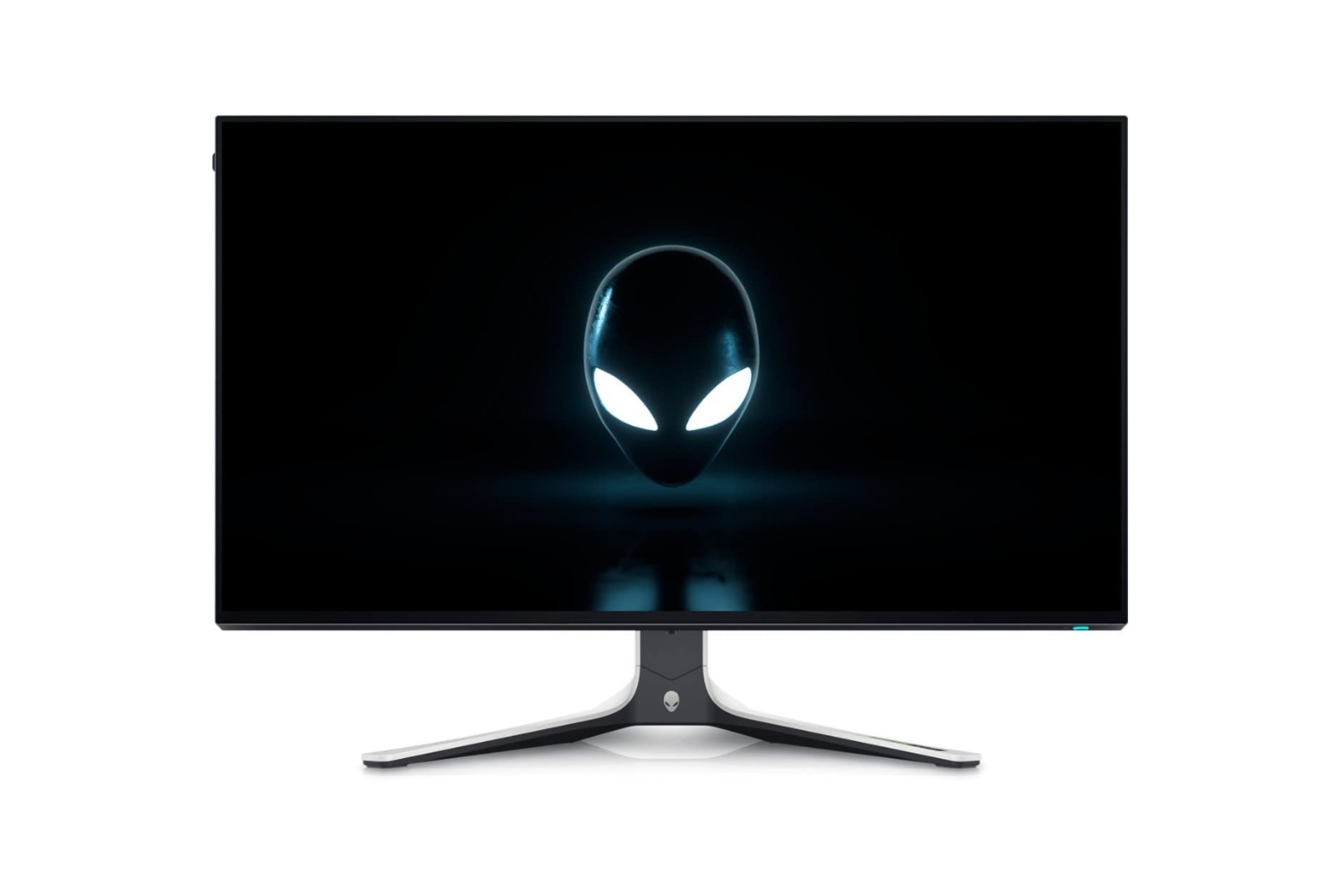Input Lag vs Response Time
When it comes to choosing a monitor, you often come across terms like input lag and response time. While both of these factors are crucial in the overall performance of a monitor, they are not the same thing. Understanding the difference between input lag and response time is essential to make an informed decision when purchasing a monitor, especially for gaming purposes.
Input lag refers to the delay between a command input, such as moving your mouse or pressing a key on your keyboard, and the monitor actually displaying the result of that command. In simpler terms, it’s the time it takes for your actions to be reflected on the screen. A high input lag can lead to a noticeable delay, which can be frustrating, especially in fast-paced gaming scenarios.
On the other hand, response time refers to how quickly the pixels on the monitor can change from one color to another. It is usually measured in milliseconds (ms) and represents the time it takes for a pixel to go from black to white or from one shade of gray to another. A lower response time means the monitor can change colors faster, resulting in smoother transitions and reduced motion blur.
Both input lag and response time are vital for an optimal gaming experience, but they impact different aspects of gameplay. Input lag affects your ability to react quickly to in-game events, while response time affects the clarity and smoothness of visual elements on the screen, especially during fast movements.
While a lower response time is generally desirable for gaming, it’s important to note that achieving a response time of 0ms is not possible in practice. Most modern monitors have response times ranging from 1ms to 5ms, with some specialized gaming monitors boasting even lower times. It’s essential to strike a balance between a low response time and other factors like color accuracy and viewing angles.
So, when considering a monitor for gaming, it’s crucial to look at both input lag and response time. Look for a monitor with a low input lag to ensure minimal delay between your actions and their display on the screen. Additionally, aim for a monitor with a low response time to enjoy smooth visuals, reduced motion blur, and a seamless gaming experience.
What Is Response Time
Response time is a term commonly used in the context of monitors and display screens. It refers to the speed at which the pixels on a monitor can change colors or transition from one shade of gray to another. Measured in milliseconds (ms), the response time indicates how quickly a pixel can go from black to white or from one level of gray to another.
A lower response time indicates that the pixels can change colors faster, resulting in smoother transitions and reduced motion blur. This is especially important for activities that involve fast-moving visuals, such as gaming or watching action-packed videos.
Response time is closely related to the performance of liquid crystal displays (LCDs). LCD monitors use liquid crystals that respond slower compared to other display technologies like cathode ray tubes (CRTs). To compensate for this, manufacturers have developed various techniques to improve the response time of LCD monitors.
It’s important to note that response time is different from input lag. While input lag refers to the delay between a command input and its display on the screen, response time specifically measures the speed at which individual pixels can change colors. Both factors contribute to the overall performance of a monitor, especially when it comes to gaming.
While a lower response time is generally desirable, it’s important to consider other factors as well. Some monitors with extremely low response times may sacrifice other aspects of display quality, such as color accuracy or viewing angles. Therefore, it’s crucial to strike a balance between response time and other features when choosing a monitor that suits your specific needs.
The optimal response time for a monitor depends on the intended use. For casual computer usage, such as web browsing and office work, a response time of around 5ms is generally sufficient. However, for gaming or other fast-paced activities, a lower response time of 1ms or 2ms may be preferred to minimize motion blur and ensure crisp visuals.
In summary, response time refers to the speed at which pixels on a monitor can change colors. A lower response time results in smoother transitions and reduced motion blur, making it especially important for gaming and fast-moving visuals. However, it’s important to consider other factors and strike a balance between response time and other display characteristics when choosing a monitor.
How Does Response Time Affect Gaming
Response time plays a crucial role in gaming, as it directly affects the visual experience and responsiveness of the gameplay. In fast-paced games, every millisecond matters, and a high response time can result in visual artifacts and lag that hinder gameplay. Let’s explore how response time impacts gaming.
One of the main effects of response time on gaming is the occurrence of motion blur. When the response time of a monitor is high, the pixels take longer to transition from one color to another, leading to blurriness in fast-moving scenes. This blurring effect can make it challenging to track fast-moving objects and can even impact your ability to aim accurately in first-person shooter games.
A high response time can also result in a phenomenon known as ghosting. Ghosting is when residues of previously displayed images remain visible momentarily, creating a trail or ghost-like effect. This can be distracting and affect the overall clarity of the visuals on the screen, especially during quick movements or rapid transitions.
On the other hand, a low response time provides a more immersive gaming experience. With a faster response time, the transitions between frames are smoother, reducing the occurrence of motion blur and ghosting. This allows for clearer and more detailed visuals, enabling gamers to react quickly and accurately to in-game events.
Furthermore, a low response time can enhance the overall responsiveness of the gameplay. When you perform an action or input a command, such as moving your character or shooting, the faster the monitor can display the result of that action, the more in sync you will feel with the game. This can result in better hand-eye coordination and a more enjoyable gaming experience overall.
It’s worth noting that the impact of response time on gaming varies depending on the type of game being played. Fast-paced and action-oriented games, such as racing games or first-person shooters, tend to benefit more from lower response times. On the other hand, slower-paced games with minimal movement may not show as much noticeable difference.
In summary, response time has a significant impact on gaming. A high response time can lead to motion blur, ghosting, and a delayed visual response, ultimately affecting gameplay. Conversely, a low response time reduces these artifacts, providing smoother transitions, better clarity, and improved responsiveness. Gamers, particularly those playing fast-paced games, should prioritize monitors with low response times for a more immersive gaming experience.
What Is Considered a Good Response Time
When it comes to response time, what is considered “good” depends on the intended use and personal preference. However, there are some general guidelines to help you determine the appropriate response time for your needs.
For most casual computer usage, such as web browsing, document editing, and watching videos, a response time of around 5 milliseconds (ms) is considered sufficient. This level of response time provides a smooth visual experience without noticeable blurring or ghosting.
However, when it comes to gaming or other fast-paced activities, a lower response time is typically desired. A response time of 1ms or 2ms is often considered excellent for gaming purposes as it minimizes motion blur and ensures sharp visuals during fast movements. This level of response time allows for more accurate tracking of objects and quicker reactions to in-game events.
It’s important to note that achieving a response time of 0ms is technically not possible due to the inherent limitations of current display technologies. Monitors advertising a 0ms response time usually utilize marketing techniques or special motion blur reduction technologies to achieve the perception of ultra-low response times. While these technologies can help reduce the perceived motion blur, it’s essential to consider other factors such as color accuracy and overall display quality.
Additionally, different types of monitors may have different response time capabilities. For example, high-quality gaming monitors are often designed with specialized panels and improved response time technologies to offer the best gaming experience. These monitors typically have response times closer to 1ms or 2ms.
Ultimately, the ideal response time depends on your priorities as a user. If fast-paced gaming is your main concern, then a monitor with a low response time is recommended. However, if you prioritize other aspects, such as color accuracy or viewing angles, you may opt for a monitor with a slightly higher response time that still delivers a satisfactory gaming experience while offering better overall visual quality.
When purchasing a monitor, it’s beneficial to read reviews and gather information to gauge the actual performance and consistency of the response time advertised by the manufacturer. Keep in mind that response time is just one factor among many to consider, and it should be evaluated alongside other specifications that are important to your specific needs.
In summary, a good response time depends on the intended use and personal preferences. For casual computer usage, a response time of around 5ms is adequate. However, for gaming, a lower response time of 1ms or 2ms is typically preferred to minimize motion blur and ensure crisp visuals. Consider your priorities and gather information when choosing a monitor to find the response time that best suits your needs and preferences.
Different Response Time Technologies
The quest for faster response times has led to the development of various technologies aimed at improving the performance of monitors. Let’s explore some of the different response time technologies commonly used in monitors today.
1. Overdrive: Overdrive technology is widely used to enhance the response time of LCD monitors. It works by increasing the voltage to the liquid crystals, allowing them to transition faster between different states. Overdrive can significantly reduce the ghosting and motion blur associated with slower response times, resulting in sharper and more fluid visuals.
2. Response Time Compensation (RTC): RTC technology is often used in conjunction with overdrive to further improve response times. It involves applying voltage adjustments to the pixels during transitions to reduce the residual motion blur. RTC can effectively minimize the trailing or ghosting artifacts, particularly in fast-paced scenes.
3. In-Plane Switching (IPS) and Plane-to-Line Switching (PLS): IPS and PLS are display technologies known for their wider viewing angles and better color accuracy. In the past, these technologies were associated with slower response times compared to other display technologies. However, advancements have been made to reduce the response time of IPS and PLS panels, making them suitable for gaming and fast-moving visuals.
4. TN (Twisted Nematic) Panels: TN panels have long been favored by gamers due to their fast response times. They can achieve response times as low as 1ms, making them ideal for competitive gaming where every millisecond counts. However, TN panels often sacrifice color accuracy and viewing angles compared to other display technologies.
5. Advanced Motion Blur Reduction Technologies: Some monitors employ advanced motion blur reduction technologies to further improve the response time’s perceived effect. These technologies, such as LightBoost, ULMB (Ultra Low Motion Blur), or DyAc (Dynamic Accuracy), utilize backlight manipulation or strobing techniques to minimize motion blur and enhance clarity during fast movements.
It’s important to note that the effectiveness of these technologies may vary between different monitor models and manufacturers. Reading reviews and researching specific models can provide insight into how well these technologies perform in practice.
When choosing a monitor, consider your priorities and preferences. If fast response times are crucial, look for monitors with overdrive, RTC, or advanced motion blur reduction technologies. However, if color accuracy and wide viewing angles are more important to you, consider IPS or PLS panels that offer a good balance between response time and visual quality.
In summary, various response time technologies have been developed to improve the performance of monitors. Overdrive, RTC, IPS, PLS, and advanced motion blur reduction technologies are among the commonly used techniques. Understanding the different technologies can help you make an informed decision and choose a monitor that meets your specific needs and preferences.
Understanding Gray-to-Gray Response Time
Gray-to-gray (GtG) response time is a specific measurement used to assess the speed at which a pixel can change from one shade of gray to another. It provides a more detailed understanding of how fast a monitor can transition between different levels of gray, which can impact the overall clarity and smoothness of visual transitions.
When measuring GtG response time, two specific shades of gray are used as reference points. The time it takes for a pixel to transition from one shade of gray to the other is then recorded. This measurement gives an indication of how quickly the monitor can change colors and provides insight into its ability to display fast-moving visuals without artifacts like motion blur or ghosting.
A lower GtG response time generally indicates that the monitor can switch between different levels of gray more quickly. This results in smoother transitions, reduced motion blur, and minimized ghosting, especially during fast-paced gaming or video playback. A higher GtG response time can lead to noticeable blurring or trailing effects, diminishing the overall visual experience.
It’s important to note that GtG response time is just one aspect of a monitor’s performance, and it should be considered alongside other factors like input lag, refresh rate, color accuracy, and viewing angles. Achieving an extremely low GtG response time can sometimes come at the expense of other aspects of display quality.
Manufacturers often provide the average or typical GtG response time of a monitor in their specifications. However, it’s essential to be aware of the methodology and the conditions under which the measurement is taken, as different methods can yield different results. It’s also worth mentioning that advertised response times might differ from real-world performance, so reading reviews and gathering user feedback can provide a more accurate understanding of a monitor’s actual GtG response time.
Additionally, it’s important to keep in mind that GtG response time can vary depending on the specific transitions being measured. Some monitors may excel in transitioning between certain shades of gray but struggle with others. Therefore, it’s important to consider the average GtG response time across a range of colors and shades to evaluate a monitor’s overall performance.
In summary, gray-to-gray (GtG) response time measures the speed at which a pixel can transition from one level of gray to another. A lower GtG response time indicates faster transitions and can lead to reduced motion blur and ghosting, improving the overall visual experience. However, it’s crucial to consider other factors and assess the average GtG response time across various colors and shades when evaluating a monitor’s performance.
Response Time and Motion Blur
Response time of a monitor plays a significant role in determining the amount of motion blur experienced during fast-paced scenes or gameplay. Understanding the relationship between response time and motion blur can help you make better-informed decisions when selecting a monitor for activities such as gaming or video playback.
Motion blur refers to the perceived blurring or smearing of moving objects on a display. It occurs when the monitor’s pixels are unable to change colors quickly enough to accurately display fast-moving images. This can result in a loss of clarity and detail, making it more challenging to track objects or perceive fine movements in movies or games.
A monitor with a higher response time tends to exhibit more noticeable motion blur. As the response time increases, the pixels take longer to transition from one color to another, resulting in a delay in displaying the image. This delay can cause trailing effects and blurring as the monitor struggles to keep up with the rapid changes happening in the visuals.
On the other hand, a monitor with a lower response time can effectively reduce motion blur. With a faster response time, the pixels are able to switch colors more swiftly, resulting in sharper and clearer visuals during fast movements. This reduces the blurring effect and allows for a smoother and more immersive viewing or gaming experience.
It’s important to note that while a low response time can help minimize motion blur, it may not completely eliminate it, especially in situations where there are rapid or erratic movements on the screen. Other factors such as the refresh rate of the monitor, the quality of the panel, and the type of content being displayed also contribute to the overall reduction of motion blur.
It’s worth mentioning that motion blur can be subjective, and each individual may have different levels of perception or tolerance towards it. Some people may be more sensitive to motion blur, while others may not notice it as much. Factors such as the distance from the screen, the size of the display, and individual visual acuity can also influence the perception of motion blur.
When choosing a monitor, it’s important to consider both the response time and other factors that affect motion clarity. Look for monitors with lower response times, generally around 1ms or 2ms, to reduce the severity of motion blur. Additionally, paying attention to the overall quality of the display, including refresh rate, panel type, and user reviews, can provide a more holistic understanding of a monitor’s ability to deliver smooth and clear visuals.
In summary, the response time of a monitor directly affects the amount of motion blur experienced during fast-moving scenes. A higher response time generally leads to more noticeable motion blur, while a lower response time helps reduce blurring and improve clarity. When selecting a monitor, consider both the response time and other factors that contribute to motion clarity to ensure an optimal viewing or gaming experience.
Choosing the Right Response Time for Your Needs
When it comes to choosing the right response time for your needs, it’s important to consider the specific activities you will be using your monitor for and your personal preferences. Here are some factors to keep in mind when deciding on the ideal response time:
1. Gaming: If you are primarily using your monitor for gaming, a low response time is crucial to ensure minimal motion blur and smooth gameplay. Response times of 1ms or 2ms are generally recommended for fast-paced gaming, as they provide sharp visuals and accurate tracking of in-game movements.
2. Casual Computer Usage: For everyday tasks like web browsing, document editing, and watching videos, a response time of around 5ms is considered sufficient. This level of response time provides a smooth visual experience without noticeable blurring or ghosting.
3. Color Accuracy: If color accuracy is a priority for you, especially for content creation or graphic design work, you may need to strike a balance between response time and color reproduction. Monitors with IPS or PLS panels generally offer better color accuracy but may have slightly higher response times compared to TN panels.
4. Budget: Response time can be a factor in pricing, with monitors boasting faster response times usually commanding a higher price tag. If budget is a concern, it may be necessary to find a balance between cost and the desired response time for your specific needs.
5. Personal Preference: Ultimately, personal preference plays a significant role in choosing the right response time. Some individuals may have a higher sensitivity to motion blur and prioritize a lower response time, while others may not notice it as much and opt for a slightly higher response time to accommodate other factors such as panel type or budget.
It’s worth noting that while a low response time is desirable for minimizing motion blur, it’s essential to consider other factors as well, such as input lag, refresh rate, and overall display quality. A well-rounded monitor with a good balance of these features can provide an optimal visual experience, tailored to your specific needs.
Consider reading reviews, comparing specifications, and even testing monitors in person if possible to determine the response time that best suits your requirements. Remember, what matters most is finding a monitor that provides an enjoyable and immersive experience tailored to your preferences, whether it’s for gaming, professional work, or casual usage.
In summary, choosing the right response time for your needs involves considering factors such as the intended use of the monitor, color accuracy requirements, budget constraints, and personal preferences. Low response times are ideal for gaming, while slightly higher response times may be acceptable for casual computer usage. It’s important to find a balance between response time and other factors to ensure a well-rounded visual experience that meets your specific needs.
Conclusion
Response time is a critical factor to consider when choosing a monitor, particularly for gaming and other fast-moving visual activities. It determines the speed at which pixels can change colors, impacting the overall clarity, smoothness, and responsiveness of the display.
For casual computer usage, a response time of around 5 milliseconds (ms) is generally sufficient, providing a smooth visual experience without noticeable blurring or ghosting. However, for gaming, a lower response time is desirable to minimize motion blur and ensure crisp visuals. Response times of 1ms or 2ms are typically recommended for fast-paced gaming.
It is important to note that achieving a response time of 0ms is not practically possible, and advertised response times may not always reflect real-world performance. Various technologies such as overdrive, response time compensation (RTC), and advanced motion blur reduction techniques are employed to improve response time in monitors.
Additionally, understanding motion blur and its relationship with response time is crucial. A lower response time helps reduce motion blur, enhancing the overall visual experience. Factors such as the refresh rate, panel type, and the quality of the display also influence motion clarity.
Choosing the right response time for your needs requires considering factors such as the intended use, personal preferences, color accuracy requirements, and budget limitations. It’s important to strike a balance between response time and other display characteristics, considering factors such as input lag, viewing angles, and overall visual quality.
In the end, finding the perfect response time for your monitor involves making an informed decision based on your specific needs, preferences, and budget. By considering all aspects, you can select a monitor that delivers an optimal visual experience, whether it’s for gaming, professional work, or casual computer usage.









